 Last week’s post covered my second-ever visit to the Dayton Porchfest. My first visit was covered as the “something new” in the 2018 Two Oldies and Something New triple feature. Although the order was shuffled this year, those three events again occurred within a week of each other, and I again attended all three. So this post will complete the coverage by reporting on the two oldies of 2018. First up is the Great Darke County Fair where I found some of the critters a little eggcentric. “That’s a joke, I say, that’s a joke, son.”
Last week’s post covered my second-ever visit to the Dayton Porchfest. My first visit was covered as the “something new” in the 2018 Two Oldies and Something New triple feature. Although the order was shuffled this year, those three events again occurred within a week of each other, and I again attended all three. So this post will complete the coverage by reporting on the two oldies of 2018. First up is the Great Darke County Fair where I found some of the critters a little eggcentric. “That’s a joke, I say, that’s a joke, son.”

 Before I saw any of the critters or any of the other agricultural exhibits, I strolled down the midway past rides and games that were almost — but not quite — the same as those I strolled past as a teenager many years ago.
Before I saw any of the critters or any of the other agricultural exhibits, I strolled down the midway past rides and games that were almost — but not quite — the same as those I strolled past as a teenager many years ago.
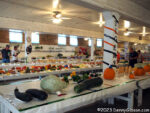

 In the lower floor of the coliseum, almost all of the flowers that had peaked for the judging were gone along with most of the baked goods. Thankfully, quite a few fruits and vegetables remained to supply some color.
In the lower floor of the coliseum, almost all of the flowers that had peaked for the judging were gone along with most of the baked goods. Thankfully, quite a few fruits and vegetables remained to supply some color.

 I was encouraged by the realization that I was still capable of recognizing dairy cows and also comforted by the fact that they were prominently labeled in case I falter at some point in the future.
I was encouraged by the realization that I was still capable of recognizing dairy cows and also comforted by the fact that they were prominently labeled in case I falter at some point in the future.

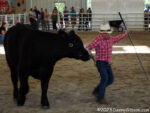
 I peeked in on the only judging that I saw going on while I was there. Junior events such as this are really the only fair competitions that I enjoy anymore. I guess it’s because I don’t need to know a single kid or critter to appreciate the accomplishments.
I peeked in on the only judging that I saw going on while I was there. Junior events such as this are really the only fair competitions that I enjoy anymore. I guess it’s because I don’t need to know a single kid or critter to appreciate the accomplishments.
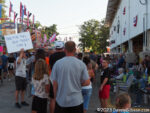 The day’s big event was the tractor pull. I had seen signs promoting it as I entered the grounds and glimpsed some of the competing machines when I passed the race track. My memories go back to when horses and tractors both competed in — separate — pulling events at the fair. I hesitated only a moment at the tail end of the ticket line before heading to my car and starting the long drive home.
The day’s big event was the tractor pull. I had seen signs promoting it as I entered the grounds and glimpsed some of the competing machines when I passed the race track. My memories go back to when horses and tractors both competed in — separate — pulling events at the fair. I hesitated only a moment at the tail end of the ticket line before heading to my car and starting the long drive home.
 The second oldie was the Tri-State Gas Engine and Tractor Show where my Wheel Horse collecting buddy, Terry, is a regular exhibitor. When hooked to a tractor, that trailer in the foreground of the picture becomes my chariot as Terry chauffeurs me around the grounds looking for items of interest.
The second oldie was the Tri-State Gas Engine and Tractor Show where my Wheel Horse collecting buddy, Terry, is a regular exhibitor. When hooked to a tractor, that trailer in the foreground of the picture becomes my chariot as Terry chauffeurs me around the grounds looking for items of interest.
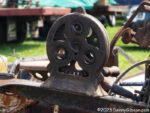 There is no shortage of strange contraptions at the show. Many of them we have seen before or at least know what they are but not all. This was a mystery that intrigued us enough to pause and make some guesses but not enough to actually dismount and examine it. I commented that it resembled a small corn sheller although there were clear differences. I snapped a picture and the mystery was instantly solved once I saw it enlarged. New Era Rope Machine is cast into its surface and there is a video of it being used here.
There is no shortage of strange contraptions at the show. Many of them we have seen before or at least know what they are but not all. This was a mystery that intrigued us enough to pause and make some guesses but not enough to actually dismount and examine it. I commented that it resembled a small corn sheller although there were clear differences. I snapped a picture and the mystery was instantly solved once I saw it enlarged. New Era Rope Machine is cast into its surface and there is a video of it being used here.
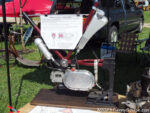
 There was no mystery in the purpose of either of these contraptions but there were some details that were far from obvious. Terry had previously seen the display and met the owner, and made me aware of just how odd this little engine was. The story of the variable displacement diesel that burned a variety of fuels including paraffin is here. A description of its operation is here. The Shaw product was another kit engine designed to be mounted on a bicycle. This example is mounted on a Gendron Iron Wheel Company bicycle. Shaw eventually switched to Briggs & Stratton engines but remained in business selling mowers and small tractors until 1962. Although it has gone through many changes, Gendron Inc. still exists as a manufacturer of mobile patient management systems.
There was no mystery in the purpose of either of these contraptions but there were some details that were far from obvious. Terry had previously seen the display and met the owner, and made me aware of just how odd this little engine was. The story of the variable displacement diesel that burned a variety of fuels including paraffin is here. A description of its operation is here. The Shaw product was another kit engine designed to be mounted on a bicycle. This example is mounted on a Gendron Iron Wheel Company bicycle. Shaw eventually switched to Briggs & Stratton engines but remained in business selling mowers and small tractors until 1962. Although it has gone through many changes, Gendron Inc. still exists as a manufacturer of mobile patient management systems.
Dale, another school days buddy of mine lives nearby and the show is a convenient meeting spot for the three of us. Along with Dale’s wife, we spent a fair amount of time this year solving the world’s problems and ignoring our own. At the end of the day, as soon as I started walking to my car, I realized with regret that I should have asked someone to snap a picture of our little group. I’ll try not to forget next time.

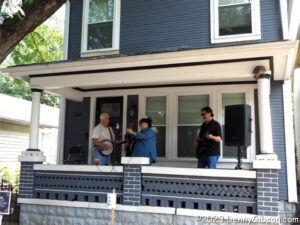
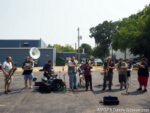
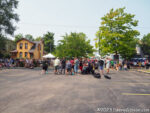
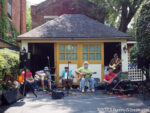
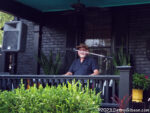
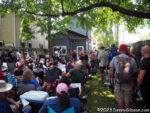



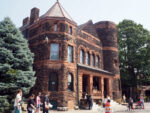
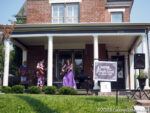

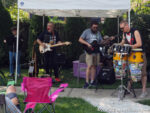
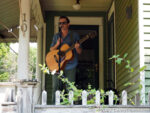
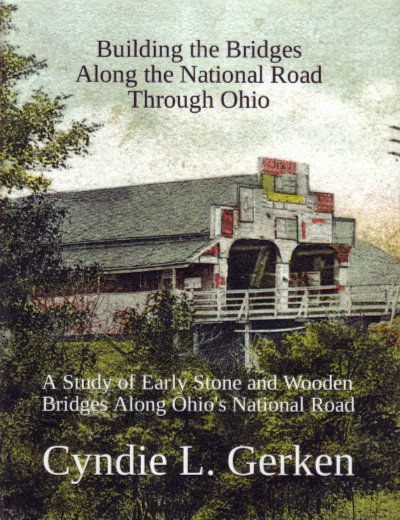 Cyndie’s done it again. As I began to write this review of Cyndie L. Gerken’s fourth book on the National Road in Ohio, I revisited my reviews of the previous three thinking I might come up with a better opening line but everything I saw just reinforced my initial thought. Cyndie has indeed done it again.
Cyndie’s done it again. As I began to write this review of Cyndie L. Gerken’s fourth book on the National Road in Ohio, I revisited my reviews of the previous three thinking I might come up with a better opening line but everything I saw just reinforced my initial thought. Cyndie has indeed done it again. Although I certainly know better, I tend to instinctively think of big stone arches when I hear the phrase “National Road bridges”. One reason is that many of those stone bridges, some of them S-shaped, are still in existence. There were also many wooden bridges along the road but all were much shorter-lived. Building the Bridges… includes both. It identifies twenty-one covered wooden bridges built for the National Road in Ohio in addition to probably forty-some stone bridges. There were also well over a thousand stone culverts and one reason an accurate count of stone bridges is difficult to produce is that not everyone followed the same rules when distinguishing culverts and bridges. Span length was and is the distinguishing characteristic. Twelve feet, twenty feet, and no doubt some other numbers of feet were used to make the distinction and some reports did not distinguish the two at all.
Although I certainly know better, I tend to instinctively think of big stone arches when I hear the phrase “National Road bridges”. One reason is that many of those stone bridges, some of them S-shaped, are still in existence. There were also many wooden bridges along the road but all were much shorter-lived. Building the Bridges… includes both. It identifies twenty-one covered wooden bridges built for the National Road in Ohio in addition to probably forty-some stone bridges. There were also well over a thousand stone culverts and one reason an accurate count of stone bridges is difficult to produce is that not everyone followed the same rules when distinguishing culverts and bridges. Span length was and is the distinguishing characteristic. Twelve feet, twenty feet, and no doubt some other numbers of feet were used to make the distinction and some reports did not distinguish the two at all.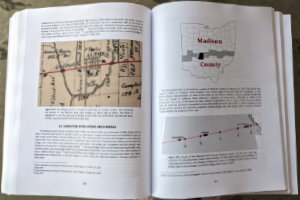 After telling us about as many of the bridge builders as she could identify, Gerken touches on some of the iconic National Road bridges east of Ohio, including the Wheeling Suspension Bridge, before beginning a county-by-county trek across the state. Each county chapter begins with a thumbnail of the county and the National Road through it. A map locating the National Road bridges in the county appears very early in each chapter. Sections on each of the bridges and some of the culverts in the county appear also in east-to-west sequence. Just as some bridges east of Ohio were touched upon preceding the border-to-border coverage, a few in Indiana follow it.
After telling us about as many of the bridge builders as she could identify, Gerken touches on some of the iconic National Road bridges east of Ohio, including the Wheeling Suspension Bridge, before beginning a county-by-county trek across the state. Each county chapter begins with a thumbnail of the county and the National Road through it. A map locating the National Road bridges in the county appears very early in each chapter. Sections on each of the bridges and some of the culverts in the county appear also in east-to-west sequence. Just as some bridges east of Ohio were touched upon preceding the border-to-border coverage, a few in Indiana follow it.  At a minimum, the location of each structure and what it crossed is given. The builder or builders are identified if known and, thanks to some pretty good sleuthing, many of them are. Beyond that, the information given for each bridge or culvert varies widely but it is a natural variation. For unnamed culverts over unnamed intermittent streams, location might be just about the only thing known. For major structures, lots of additional information might be included and usually supported by various graphics. Topographic maps are fairly common and there are lots of historic photographs and drawings. Plenty of modern photos also appear and if a structure is still standing there’s a good chance that the book contains a very modern picture of it taken by the author herself. Stories about events associated with happenings at or near a particular bridge can pop up anytime and are often fleshed out by reproducing contemporary reports.
At a minimum, the location of each structure and what it crossed is given. The builder or builders are identified if known and, thanks to some pretty good sleuthing, many of them are. Beyond that, the information given for each bridge or culvert varies widely but it is a natural variation. For unnamed culverts over unnamed intermittent streams, location might be just about the only thing known. For major structures, lots of additional information might be included and usually supported by various graphics. Topographic maps are fairly common and there are lots of historic photographs and drawings. Plenty of modern photos also appear and if a structure is still standing there’s a good chance that the book contains a very modern picture of it taken by the author herself. Stories about events associated with happenings at or near a particular bridge can pop up anytime and are often fleshed out by reproducing contemporary reports.
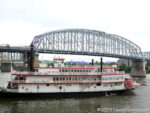











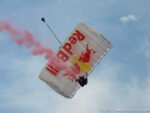
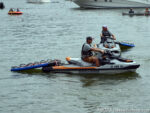


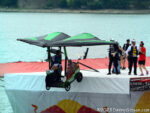

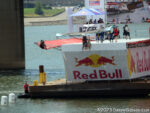
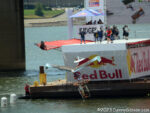

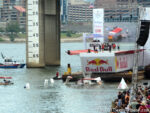

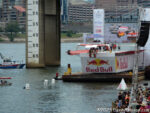

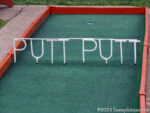
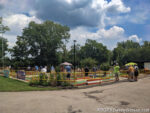




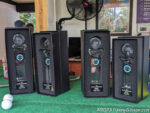
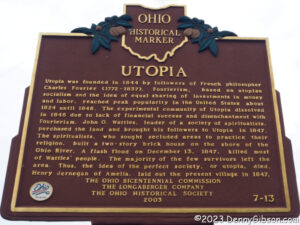
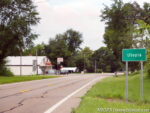


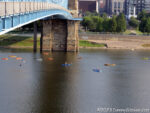

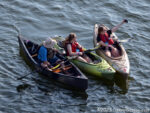
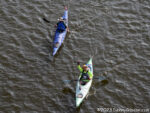
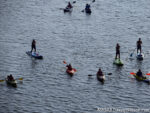
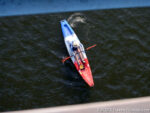
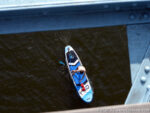


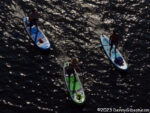
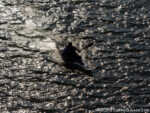
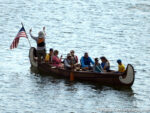
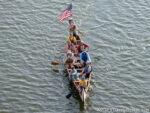
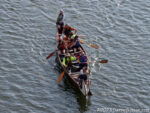
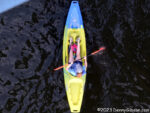
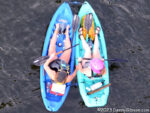


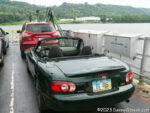

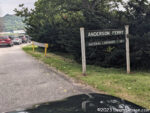

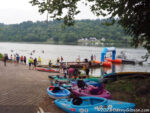
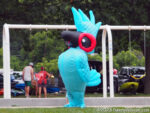

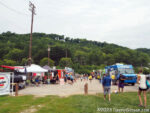
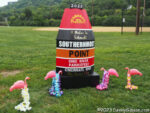
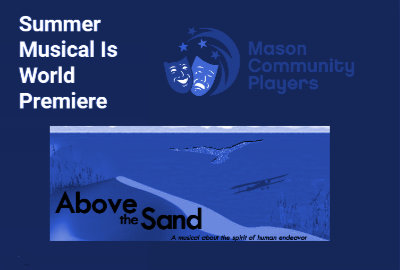 When I wrote about
When I wrote about 